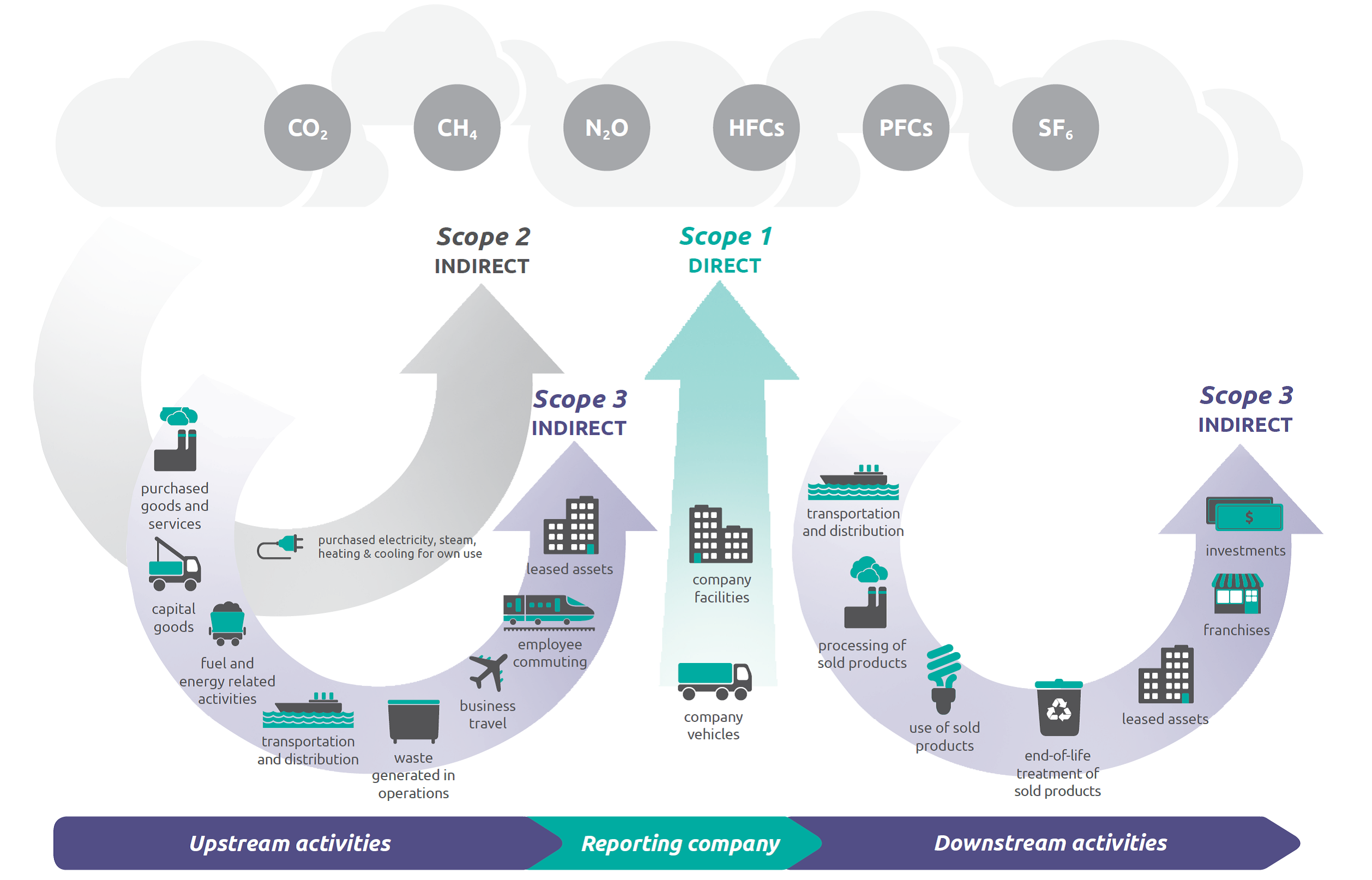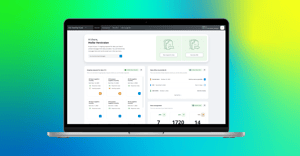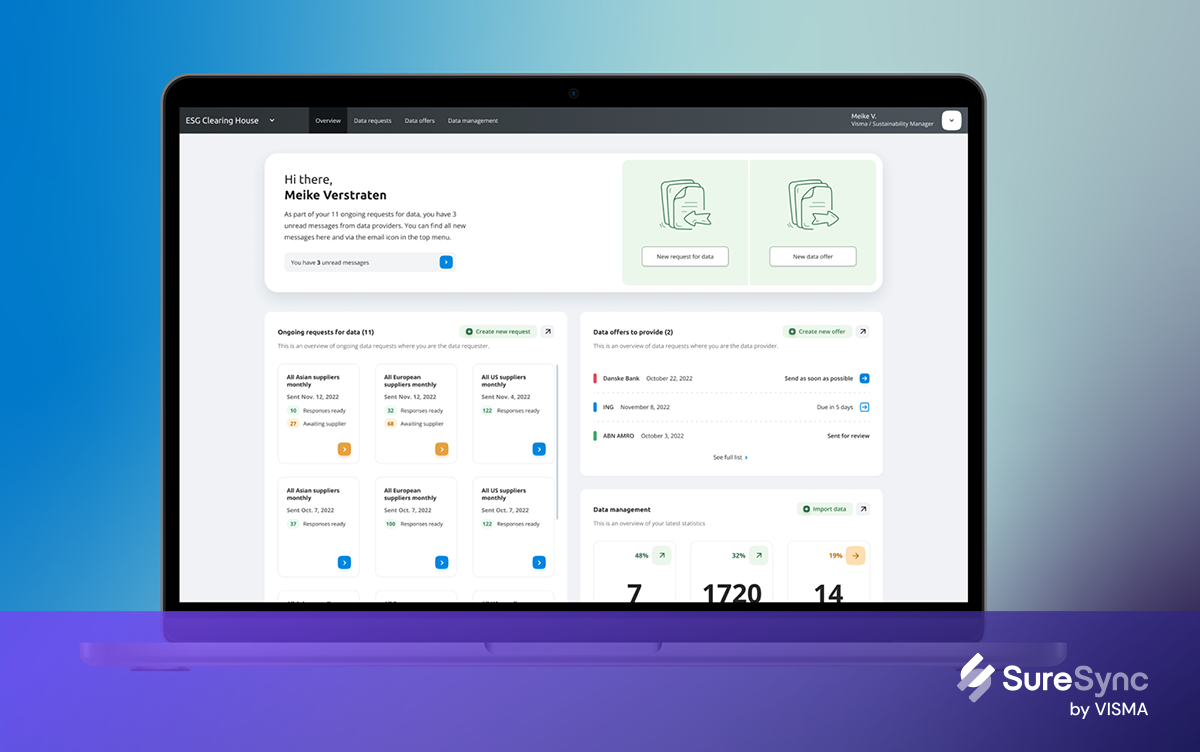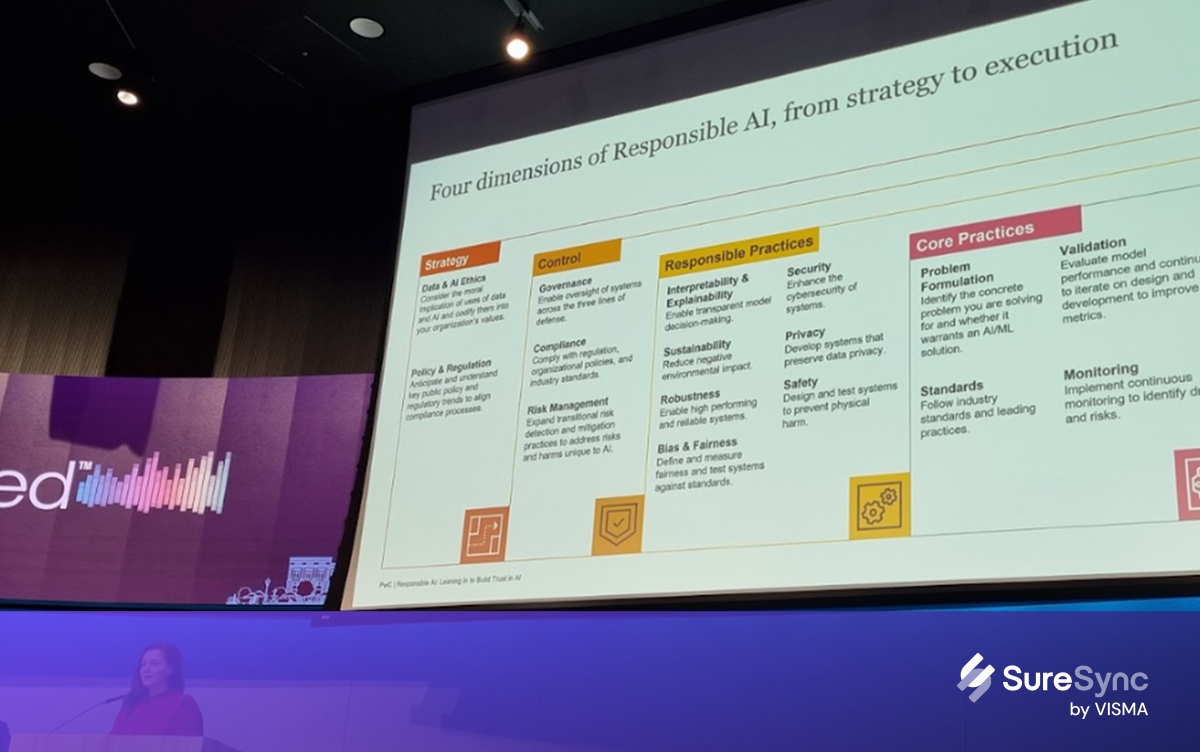THE ABCs and 1, 2, 3s of GHG
When collecting and reporting on sustainability data, companies urgently need to look at the Greenhouse Gas Protocol and its emission scopes. In sustainability reporting, Scope 3 reporting is soon becoming mandatory for a whole lot of companies, so if you don't have a process, you have to start now. What are the ABCs and 1, 2, and 3s of GHG?
In this blog
- Greenhouse Gas Protocol
- Upcoming European Initiatives and international regulations
- The 3 Scopes of Greenhouse Gas Emissions
- Scope 3 Emissions, Categories and Examples
- Ranking Categories in Scope 3
- Collecting Data from Scope 3
- Advice for Collecting Sustainability Data in 2023
- Is it too late to start?
Further reading below 👇
Greenhouse Gas Protocol
If we know where the biggest sources of climate change are, we can better manage the adverse effects of climate change. Measuring and reporting are key, but the current limitation of measuring sustainability is a lack of quality data.
The world's most widely used greenhouse gas accounting standards are in the Greenhouse Gas Protocol. They have made their way into GRI and SASB, the most used sustainability reporting standards.
Upcoming European Initiatives and international regulations
Upcoming initiatives and regulations on sustainability disclosures, like the CSRD in Europe and the IFRS-S2, by the ISSB, require Scope 1,2 and 3 GHG emissions disclosure.
The 3 Scopes of Greenhouse Gas Emissions
So, it’s important for corporates to refer to the Greenhouse Gas Protocol which splits emissions into three scopes. And those are relatively straightforward.
Scope 1 is what you emit yourself as a corporate. So if you buy fuel and light it up, that's your emissions.
Scope 2 is the emissions caused by third-party providers of your energy, your cooling, and your heating. If you take energy and use that in your processes, that's associated with Scope 2 emissions.
Everything else, and that’s a broad range of 15 categories, is the Scope 3 emissions.
This will not necessarily be an equal-sum game as the GHG Protocol has proposed. From the example, we can already see that the Scope 1 emissions of an energy company are the Scope 2 emissions of its clients. And that also goes for Scope 3 emissions which are much broader.
Scope 3 Emissions, Categories and Examples
Scope 3 is split over 15 categories, upstream and downstream. If we zoom in on Scope 3 emissions, you’ll find out that to do proper reporting, a lot of data is needed. For example, let’s look at the first category, purchased goods and services.
Suppose you build cooling machines and you need some nuts and bolts for the build. In that case, the nuts and bolts you buy and the energy being used to produce them are associated with your Scope 3, category 1 purchased goods and services. In the example of business travel, commuting employees, and capital goods, that's other categories in upstream scope 3. While distribution transport also comes back in downstream activities and loads of other examples.

Source:WRI/WBCSD Corporate Value Chain (Scope 3) Accounting and Reporting Standard (pdf), page 5.
Ranking Categories in Scope 3
In sustainability reporting, Scope 3 categories have no particular ranking or order. Each and every company needs to determine which categories are most important for them. Therefore, if you don't have the data, you can start relatively easy with the so-called spend-based methodology. That means looking at how much money is spent in each category to determine where to start and find out more.
Reference numbers are available from certain databases. For example, you can look up the type of nuts and bolts to determine the approximate amount of CO2 emissions in the reference data.
How the ESG Clearing House will transform sustainability reporting for the finance sector
Financial institutions are no strangers to the use of data when it comes to risk management and compliance. Sustainability disclosure requirements compel financial institutions to expand the use of data for sustainability reporting and evaluating climate-related risks. This increases the demand for high-quality, granular ESG data.
Read this guest blogpost by ABN AMRO's Tjeerd Krumpelman 👉
Collecting Data from Scope 3
To make data collection work, you need to prioritise and focus on the specific elements that have the most impact and are easiest to collect for your company. That’s where you start. It’s definitely a multiyear project. Eventually and ultimately, you will need to come up with the full scope across all categories for your company.
When you start, you will need to look at the full scope of all categories, the data quality and what can be improved. The Greenhouse Gas Protocol is a little bit different per category, but the spend-based method comes back in virtually every category.
For the distribution category, you ultimately want to know how much fuel is being used to move your goods. Green electricity is different from grey electricity. HVO is different from biodiesel, which is also different from traditional diesel. Therefore, the CO2 emissions associated with a company’s distribution will also be different.
Advice for Collecting Sustainability Data in 2023
In the end, each company will be exposed to collecting data for CO2 emissions sooner rather than later. The best advice is to start as soon as possible, make a good plan, and start with execution. Right away. For many companies, it’s fairly clear where your biggest impact is. Here is a list of recommendations for getting a jump on collecting sustainability data from suppliers and the supply chain.
- Focus on your core processes. Start with fetching data that is easy to collect in your main categories and then focus on other categories.
- Define a roadmap, set data coverage and quality targets, and work towards a certain goal. The roadmap will make it easier to guide external expectations of capital providers and other stakeholders. Having a roadmap will help to inform internal stakeholders and employees and establish ways to work together to gather information. And for yourself to report and manage your annual progress.
- Find the data, look for gaps in the data and improve data quality. In Scope 3, data needs to involve many of your partners, your business partners, your supply chain which also includes your sub-suppliers and your second-tier suppliers, and so on.
- Focus on your first-tier suppliers. Leave the responsibility where it should be. Make sure that you have a good connection and a good understanding of what your first-tier suppliers are doing. But they need to manage and measure the CO2 emissions and data issues they have with their direct suppliers which can also be your suppliers.
Is it too late to start?
To have a viable business going forward, you must deal with sustainability reporting requirements. Your employees will start asking for your data and information. Your customers will start asking for data. Turn this into a strategic advantage to manage together with your supply chain.
You need to deal with Scope 3 requirements and act because it’s becoming mandatory and because your bank will soon become involved and ask you questions. Banks need to know detailed information for their reporting requirements, and you need to deliver. Bad or no reporting could increase interest rates or, in the worst scenario, you could be cut off from loan facilities. And when cutting emissions in your primary process and your supply chain becomes a priority, you will need the data to prioritize and to manage your carbon performance.
The tasks are not going away and will only get more complicated. You will probably need someone to manage the data collection processes full-time. Not that you should start hiring people immediately, but start thinking, calculating and budgeting hours for these reporting tasks. For most European companies, we are seeing this coming up fast and will see this boomerang every quarter or every year. Even if you are late to the race and in bad shape, you can still make a start.





